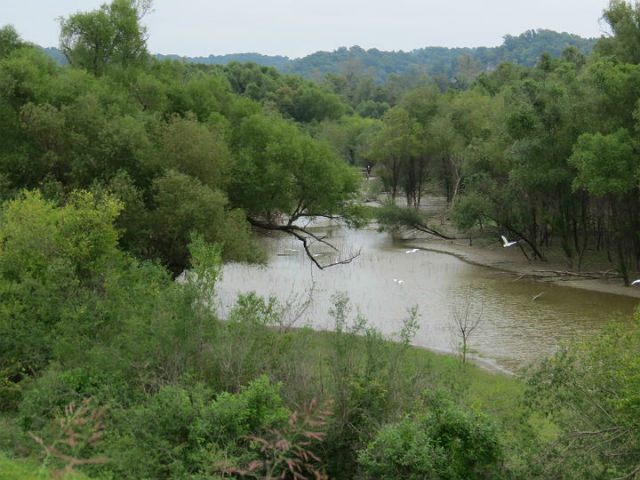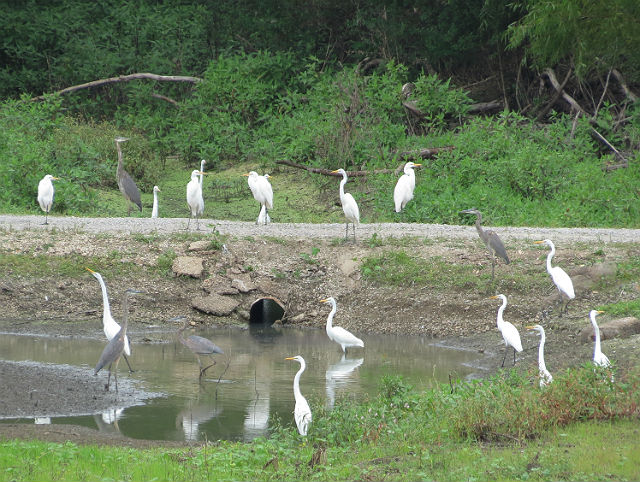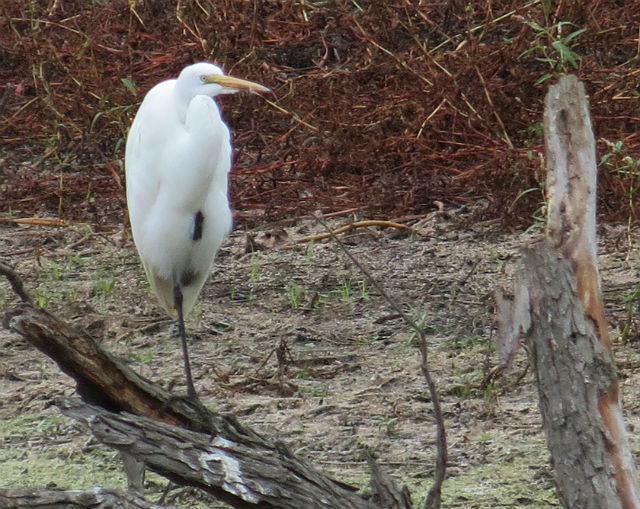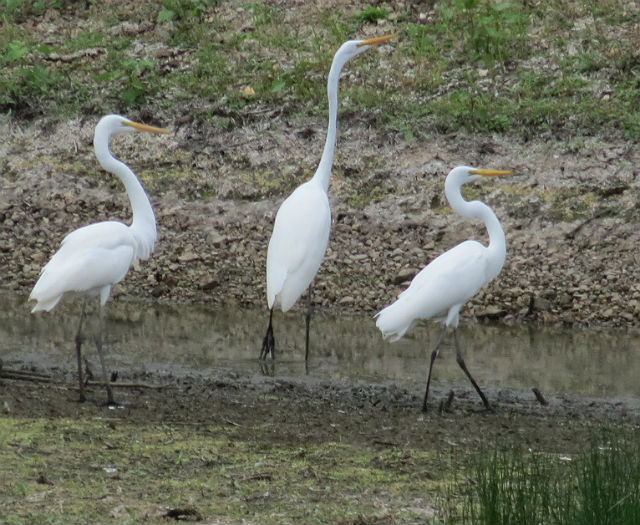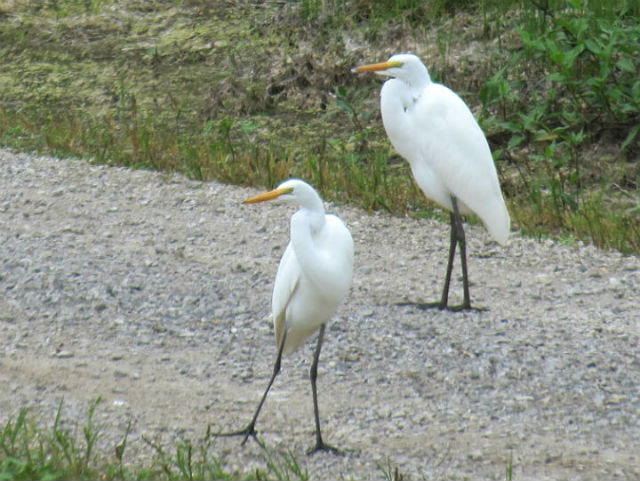While visiting southern Illinois and searching for reptiles and amphibians along the banks of the Big Muddy River, I came across a number of these majestic birds.
The Great Egret is a member of the heron family. This bird is the symbol of the National Audubon Society, which was formed to stop the slaughter of herons for their showy plumes. It is our second largest heron; only the Great Blue Heron (shown in photo above with Great Egrets) is bigger.
In the early 20th century, they were almost hunted into extinction for their long, attractive feathers that were commonly used as decoration for ladies hats, but their numbers have increased over most of its range and they continue to expand their territories. During the breeding season, both males and females grow long lacy, delicate and flowing plumes on their backs that curl over their tails.
With a wingspread of 55 inches, their wings are longer and wider than most other white herons. During the day, they forage alone or in mixed flocks, catching fish by standing motionless in the water. The neck has a characteristic kinked S-curve. When prey comes within striking distance, they spear it with their long, sharp bill. The largest part of their diet consists of fish, frogs and crayfish.
A group of egrets has many collective nouns, including a “congregation,” “heronry,” “RSVP,” “skewer,” and “wedge” of egrets.

